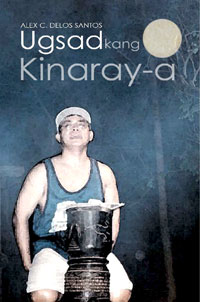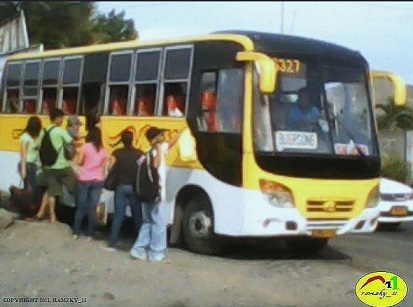
Last Saturday, I took a Ceres bus to Iloilo from our province in Antique to take my flight back to Manila.
As I was gathering my baggage upon arriving at the bus terminal in Iloilo, I couldn’t find the box containing foodstuff (adobong manok, suman, saba na saging, rootcrops) that neighbors went out of their way to obtain and prepare for Manila relatives.
There were no more passengers left and I looked all over the bus but I couldn’t find the box. I was sure it was loaded in the bus together with my two bags. So I asked the conductor, “Sa diin tana ang akon box? May higot nga yellow nga straw.” (Where’s my box? The one tied with yellow-colored straw.) That’s in the Kinaray-a language of Antique.
The conductor helped me look all over the bus. We couldn’t find it. He tried looking at the rear and side compartments. No box.
He took one last look inside the bus and he found it under the last seat. I thanked him profusely.
He accepted it with relief saying they felt responsible for every piece of baggage loaded in the bus. Then he remarked. “’Box’ man ikaw nga’box’. Karton gali ang imo ginasagap. (You keep on saying ‘box’ when you are looking for a ‘karton.’)”
I was taken aback by what sounded to me was a scolding. I retorted, “Ano ang diperensya kang box kag karton? (Why, what’s the difference between a box and a karton?)”
He looked at me as if giving me basic lessons in language: “Karton dya.(This is a karton.)”
Then I realized “Box” is an English word which may not be the language of the conductor. I was talking to him in Kinaray-a so why did I use the English word “Box”?
My friend Sol Vanzi remarked when I told her this incident, “Your mind did not catch up with your feet.”

I reacted strongly to the conductor’s remark about my talking about the “box” when all along I was looking for a “karton” because when were were kids, we would make fun of people returning from Manila who insisted on talking in Tagalog, as if they have forgotten Kinaray-a. They looked ‘maarte” and ridiculous.
I remember there was once a woman returning home from Manila who told the bus driver, “Para, Para” when the bus was nearing their house but the driver didn’t stop. That’s because during those days, if you want to get off the bus, you tell the driver, “Brake lang.” That’s telling the driver to step on the brakes.
Now, I noticed people don’t say, “Brake lang” anymore. “Para” is now understood as “stop.” Or “Sa lugar lang.” The direct translation is “in the right place” but it’s more of a request to stop where it is not prohibited.
At least my province mates are slowly catching up. I hope not so fast because I would not want to hear them say what is so common these days in the cities among young people :“Wait lang ha. (Just wait.)” Why not “Hintay lang po sandali.” Or say it in straight English, “Please wait.”
Worse is the text lingo: Hir na mi. Wer na u.”
I cannot imagine how the bus conductor would react to what sounds like the alien talk.
Talagang magkaiba nga ang box at karton. Kasi english at tagalog.
kung ikaw ay nasa ibang bahay, siguraduhin mo na tama ang pintuang iyong papasukan. maiihi ka na sa kusina ka pupunta?
Arvin, I will edit out your irrelevant comments. Nakakasira sa conversation.
Wala dito sa eksena si Grace Poe.
Onga naman, karton yun eh.
Ano kaya ang tawag niya sa metal box? 🙂
Ma’am Ellen, basi abi niya kahon. 🙂
Amo gid, Acef.